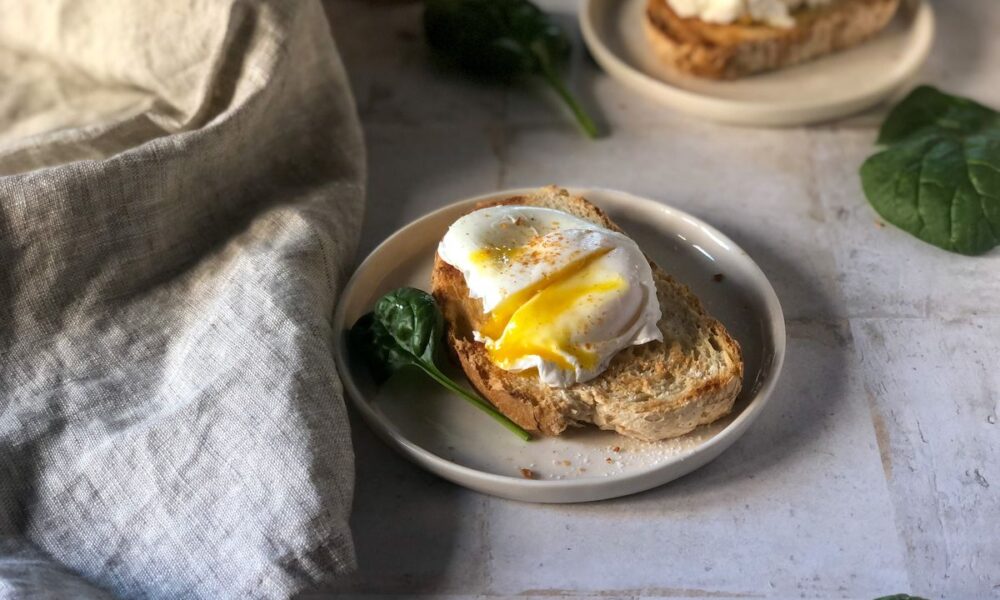Recipes
How to make a poached egg? The infallible technique with photos and video recipes

Here is the poached egg recipe, an appetizing dish that you can enjoy for breakfast or as a second course in a quick dinner.
Sooner or later all chefs have to deal with it: we are talking about the poached egg, a classic and quick preparation, but which at the same time presents many pitfalls. This is one of those dishes that improves with experience, and that you have to try many times to refine your technique.
If it's your first time trying it, we're sure that with our tips you'll get it right the first time . Let it bet? Then follow us into the kitchen and let's see together all the steps for perfectly cooking poached eggs and the video recipe !
How to make poached eggs
1. Place a pan full of water on the heat. It must have high edges and the water must be at least 8-10 centimeters high, so that the egg never touches it. Once the water is boiling, immediately lower the heat until you achieve a light simmer . Otherwise, the white would disperse throughout the pan and the egg would not have its typical geometric appearance.
2. Pour the egg into a bowl without breaking the yolk.
3. When the water is lightly simmering, lower the heat again to zero and add the white vinegar ( apple cider vinegar is also suitable). Wait for a minute for the water to cool slightly and with a spoon create a circular current at its edges, so that a small vortex forms in the center.
4. Gently slide the egg from the bowl into the hot water exactly into the center of the swirl .
5. Don't be fooled: poached eggs take longer to cook than you might think. It would seem that the clear one is all solidified, but the innermost one, which cannot be seen, is not yet solidified. Leave it in the water for at least 4-5 minutes , continuing to stir.
6. Remove the egg from the water with a slotted spoon , being careful not to break it.
If you want to prepare more, repeat the same operation , cooking one egg at a time. Enjoy your meal!
Perfect poached egg: the tricks for the recipe
As we were saying, there are many risks that one faces when attempting this recipe: we can obtain an overcooked egg, which therefore has a completely solid yolk, or an undercooked white and therefore a shirt… completely broken! In short, experience is certainly the best weapon for this dish, but there are also some tricks of the trade that you can try to apply.
- First of all the vortex: make sure that it is a vortex that is not too fast, otherwise the egg will disperse, and then the vortex will stop first and the result will therefore be a clear dispersion on the edges of the pan.
- Regarding the pot, another recurring mistake is choosing one that is too small. This way you won't be able to turn it properly and take it out intact !
- The vinegar can be white wine, apple or any other you have at home as long as it is not balasmic . You won't have to go and buy a specific one, specifically for this recipe, also because the quantity is very small and the flavor will barely be noticeable. So what is the purpose of the vinegar in the poached egg? Its purpose is to help hold the white together: by increasing the coagulation of the proteins, it cooks it faster.
- Finally, one last trick concerns how to collect the egg . It may seem trivial, but many people break it: use a slotted spoon, but above all be delicate !
How to eat a poached egg
This dish is delicious enjoyed in many ways. You can also try it just on a slice of toasted bread with very little salt and freshly ground pepper. Another very appetizing way to prepare them is to place them on very thin flakes of butter and garnish them with half a spoonful of grated parmesan.
Poached eggs are also excellent on their own, but often serve as an accompaniment to more complex dishes. Try pairing them with salmon, avocado, cheese, asparagus and many other useful ingredients to prepare a tasty appetizer: with this recipe all you have to do is arm yourself with imagination!
Here's how to prepare perfect fried eggs !
storage
The most appetizing characteristic of the poached egg lies in the two consistencies: the creamy part of the egg white and the liquid part of the yolk. These two characteristics do not last for a long time once ready, which is why we do not recommend storing them in the refrigerator or freezing them in the freezer.
Riproduzione riservata © - WT